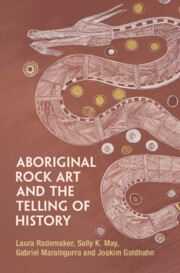Book contents
- Aboriginal Rock Art and the Telling of History
- Aboriginal Rock Art and the Telling of History
- Copyright page
- Dedication
- Contents
- Figures
- Foreword
- Acknowledgements
- Note on the Text
- Abbreviations
- Chapter 1 Rock Beats Paper
- Chapter 2 Change and Tradition in West Arnhem Land Rock Art
- Chapter 3 The Counter-Archive of First Nations Biography
- Chapter 4 Reading the Writing on the Wall
- Chapter 5 Touchstones for Memory, Bedrocks for History
- Chapter 6 Timelessness and Permanence
- Conclusions
- Afterword
- Glossary
- Bibliography
- Index
Chapter 3 - The Counter-Archive of First Nations Biography
Published online by Cambridge University Press: 12 November 2024
- Aboriginal Rock Art and the Telling of History
- Aboriginal Rock Art and the Telling of History
- Copyright page
- Dedication
- Contents
- Figures
- Foreword
- Acknowledgements
- Note on the Text
- Abbreviations
- Chapter 1 Rock Beats Paper
- Chapter 2 Change and Tradition in West Arnhem Land Rock Art
- Chapter 3 The Counter-Archive of First Nations Biography
- Chapter 4 Reading the Writing on the Wall
- Chapter 5 Touchstones for Memory, Bedrocks for History
- Chapter 6 Timelessness and Permanence
- Conclusions
- Afterword
- Glossary
- Bibliography
- Index
Summary
This chapter reveals how rock art sheds important light on individual lives as well as speaking more broadly to Indigenous experiences. We argue that rock art is created in social, historical contexts – and these contexts are evidenced in the art. Rock art is a fully situated historical source. Focusing on the story of artist Quilp, we demonstrate how rock art is a ‘counter-archive’ that can reveal important new understandings about Aboriginal experience, about which the colonial archive is silent.
- Type
- Chapter
- Information
- Aboriginal Rock Art and the Telling of History , pp. 46 - 70Publisher: Cambridge University PressPrint publication year: 2024

